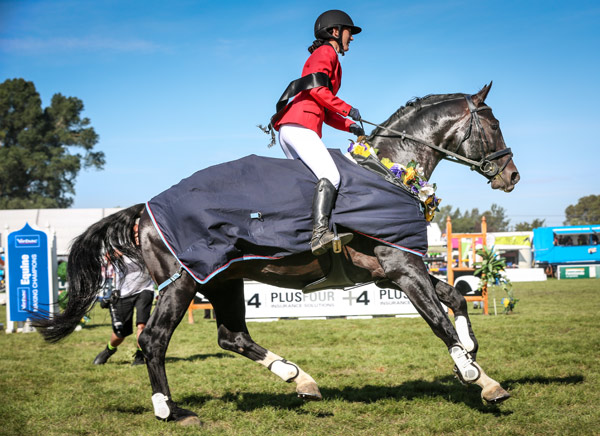We are grateful to Matamata Veterinary Services Ltd. for the contribution of this article, which was written in June 2008
Why vaccinate?
Vaccines are among our most potent weapons against disease. Over the past 100 years they have saved many thousands of horses’ lives and helped render many terrible equine diseases exceedingly rare.
Routine vaccination should be part of any comprehensive health maintenance program for ALL horses.
The objectives of vaccination fall into three categories;
- To prevent disease
- To reduce the severity of disease
- To minimize the extent to which horses spread the disease.
If you have only one horse, then the important aspect is disease prevention; but if you own a big farm, you will want to reduce the impact of an outbreak.
How Vaccines Work
Vaccinations work by introducing weakened or killed microorganisms into the body to ‘train’ the immune system to recognise and destroy specific disease-causing pathogens (virus or bacteria). On subsequent exposure to a specific pathogen, the horse is then able to mount a much more rapid and effective response to prevent or minimize the clinical symptoms.
Vaccines Currently Available (2008)
A horse’s vaccination regimen should be based on its age, occupation, and social arrangements, as well as the prevalence of particular diseases in the local area. Therefore an old companion in the back paddock will have different requirements from an elite athlete that travels the world.
- Tetanus Toxoid: Tetanus is a rigid paralytic disease caused by the toxin of Clostridium tetani, an anaerobic bacteria that lives in soil and faeces but can infect wounds. PLEASE NOTE that Tetanus Anti-Toxin (TAT) is just that, it is an anti-toxin that is only useful as a preventative cover when we don’t know the full vaccination history or status of an animal. It is NOT a vaccine and only protects the horse for up to six weeks. That is, for the period of the wound that you may be treating it for.
- Strangles: Highly contagious infection of the lymph nodes, usually of the head, caused by Streptococcus equi bacteria. The abscesses may become so large as to restrict the airway (hence the term ‘strangles’) and may break internally, draining thick yellow pus through the nose, or externally through a spontaneous or surgical opening in the skin.
- Rhinopneumitis: a contagious disease caused by herpesviruses (EHV1, EHV4) and characterised by fever, respiratory infection, and in mares, abortion. This can be one of ‘the viruses’ to affect racing yards. There is also a paralytic form of the disease that caused serious losses in the United Kingdom just 3 years ago.
- Rotavirus A: a type of virus that causes profuse diarrhoea in foals younger than 3 months old. In addition to diarrhoea, infection includes depression, failure to nurse, and recumbency. With this disease you need to vaccinate the mares at 8, 9 and 10 months of pregnancy.
- Salmonella: a highly contagious bacterial disease that causes diarrhoea and colitis in horses of all ages, usually brought about in stressful conditions.
Other vaccines available but not usually applicable for horses living in New Zealand include Influenza (Equine Flu), Botulism, Encephalomyelitis (brain and spinal cord disease), West Nile Virus, Rabies, and Equine Viral Arteritis (some importance for Standard bred breeding stallions but not yet prevalent in the Thoroughbred population).
When to vaccinate
The horse has an excellent immune system, on a par with any other species. However, a foal’s initial immune protection is from the absorption of colostrum milk from the mare. This level of absorption can be checked by measuring the immunoglobulin level (IgG) of the blood at 24 to 48 hours of age
- This passive absorption of maternal antibodies means that the foals’ own immune system won’t respond properly to vaccination until around 4 to 6 months of age. This is the best time to start a programme.
- Another practical tip is to vaccinate your mares just prior (one month) to foaling. This will boost their colostral anti-body levels to the maximum level and help to ensure that your new born foal is receiving all the protection it can until it’s own immune system is functioning properly.
Record Keeping
Keeping accurate records is important to the success of any vaccination programme so that doses are being given regularly and at the right time. The introduction of a horse passport or identification/ vaccination card may be very useful for this purpose. This system is commonplace overseas.
Summary
As we have already discussed, you need to take each horse and farm on its own merits. But remember that without the progress that has been made with vaccines many diseases that we now hardly encounter would still be commonplace.
A sick horse or one performing below its peak, or a mare abortion is in real terms very costly. Especially if it could have been prevented, or the effects minimised, by the relatively small cost involved with an effective vaccination programme.
As a guide, consider protection at this time of year (early winter) to the following diseases:
- Tetanus and Strangles: this comes in a ‘2 in 1’ package. Give three doses not less than two weeks apart as a primary course then an annual booster.
- Rhinopneumitis/ Equine Herpes Virus: Pregnant mares should receive doses at 5, 7 and 9 months of pregnancy. Competition horses can have a primary course of two doses a month apart, especially at the start of the season, and then go to a 6 monthly or annual booster programme depending on the risk of cross infection from mixing with other horses.
- Rotavirus is given at 8, 9 and 10 months of pregnancy.
- Boost all your mares with Tetanus/ Strangles one month prior to foaling.
And remember, vaccination programmes should be periodically re-evaluated and adjusted based on new threats, changes in local/ regional conditions and any modifications that have occurred in a horse’s activity level or surroundings.

